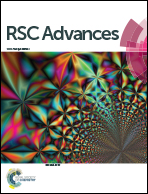Improving the electrical conductivity and interface properties of carbon fiber/epoxy composites by low temperature flame growth of carbon nanotubes
Abstract
Carbon nanotubes (CNTs) were grown in situ on carbon fibers (CFs) at low temperature (∼450 °C) in an ethanol combustion flame to develop multifunctional hierarchical reinforcements for epoxy resin matrices. Because of the low temperature, short duration and reducing atmosphere used in the flame growth process, there was no evident decrease of the tensile strength of the CFs. However, both the electrical conductivity and interfacial properties of the CFs were improved significantly after the CNTs were grown for only 3 minutes, resulting in >170% increase in in-plane electrical conductivity and ∼70% improvement in interfacial shear strength of the carbon fiber/epoxy composites. Electron microscopy studies revealed that both tip and root growth mechanisms were involved during the flame-induced synthesis. A good interfacial bonding strength between the CNTs and CFs was observed and could be attributed to the diffusion of metal catalyst particles into the CF surface and/or the carbon bonding between CNTs and CFs. Substantial improvements in electrical conductivity and interfacial properties without compromising the tensile strength of CFs after the flame growth of CNTs confirmed the efficiency and effectiveness of this method.


 Please wait while we load your content...
Please wait while we load your content...